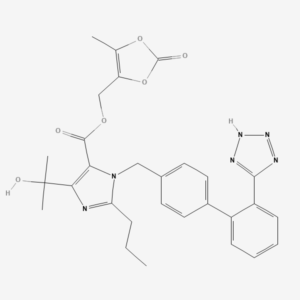Amid the extensive catalog of pharmaceuticals available today, Pantoprazole Sodium emerges as a significant player in the management of common gastrointestinal issues. This post aims to shed light on the various aspects of this vital drug, covering its mechanism of action, therapeutic uses, potential side effects, and necessary precautions.
UNVEILING PANTOPRAZOLE SODIUM
Pantoprazole Sodium falls into the category of drugs termed proton pump inhibitors (PPIs). This powerful medication is frequently prescribed to address certain stomach acid-related conditions such as gastroesophageal reflux disease (GERD), stomach and duodenal ulcers, and esophagitis.
THE SCIENCE BEHIND PANTOPRAZOLE SODIUM
Understanding the mechanism of Pantoprazole Sodium requires a basic understanding of proton pumps. These enzymes found in the stomach lining are integral to the production of stomach acid. Pantoprazole Sodium operates by inhibiting these enzymes, thereby decreasing the amount of stomach acid generated. This function can aid in preventing and healing gastric and duodenal ulcers, reducing acid reflux, and addressing other conditions linked to excessive stomach acid.
DELVING INTO THERAPEUTIC USES
1. ALLEVIATING GASTROESOPHAGEAL REFLUX DISEASE (GERD)
One of the main applications of Pantoprazole Sodium is in the treatment of GERD, a chronic condition wherein stomach acid frequently flows back into the esophagus, the tube connecting the mouth and stomach. This acid reflux can irritate the esophageal lining, leading to heartburn and other uncomfortable symptoms. By reducing stomach acid production, Pantoprazole Sodium can alleviate GERD symptoms and facilitate esophageal healing.
2. TREATING STOMACH AND DUODENAL ULCERS
Pantoprazole Sodium is often utilized in the treatment of stomach and duodenal ulcers. These are painful sores that develop on the inner lining of the stomach, upper small intestine, or esophagus. The action of Pantoprazole Sodium in diminishing stomach acid can aid in the effective healing of these ulcers.
3. MANAGING ZOLLINGER-ELLISON SYNDROME
This medication is also valuable in treating less common conditions like Zollinger-Ellison Syndrome, characterized by an overproduction of stomach acid often resulting in peptic ulcers. Through proton pump inhibition, Pantoprazole Sodium effectively controls this syndrome.
UNDERSTANDING THE POTENTIAL SIDE EFFECTS
While Pantoprazole Sodium is generally well-tolerated, it can lead to side effects like any other medication. Common side effects include headaches, diarrhea, nausea, stomach pain, gas, and dizziness. These are typically mild and tend to subside as the body adjusts to the medication.
However, serious side effects can occur, albeit rarely. These include persistent nausea, vomiting, weight loss, and severe abdominal pain. If you experience severe side effects, particularly signs of kidney problems (such as a change in urine quantity) or lupus symptoms (such as a rash on the nose and cheeks, or new or worsening joint pain), immediate medical attention should be sought.
PRECAUTIONS AND INTERACTIONS: WHAT TO KEEP IN MIND?
Before initiating treatment with Pantoprazole Sodium, it’s crucial to inform your healthcare provider about your ongoing medications and any existing health conditions, particularly liver disease and lupus. Also, if you’re pregnant, planning pregnancy, or breastfeeding, ensure to discuss it with your healthcare provider. Although Pantoprazole Sodium is generally considered safe during pregnancy, discussing potential risks is always advisable.
Pantoprazole Sodium may also interfere with certain laboratory tests, potentially leading to false test results. It’s essential to notify laboratory personnel and all your healthcare providers about your use of this drug.
Moreover, long-term use of Pantoprazole Sodium may make it harder for your body to absorb vitamin B-12, leading to a deficiency. If you’ve been on Pantoprazole Sodium for longer than three years, you might need to take vitamin B-12 supplements.
AN EXTENDED LOOK AT PANTOPRAZOLE SODIUM AND BONE FRACTURE RISK
Long-term, high-dose, or age above 50 years can increase the risk of osteoporosis-related fractures of the hip, wrist, or spine. If you are on a high dose or long-term PPI therapy like Pantoprazole Sodium, your doctor may monitor you closely or conduct specific tests to check your bone health.
PANTOPRAZOLE SODIUM: THE PILLAR OF GASTROINTESTINAL HEALTH
To sum up, Pantoprazole Sodium is a significant medication in managing a host of gastrointestinal conditions. As a reliable aid, it helps ease the discomfort and potential dangers associated with excessive stomach acid. As with all medicines, Pantoprazole Sodium usage should be under a healthcare provider’s supervision to leverage its benefits effectively while minimizing potential side effects or interactions.
The role of Pantoprazole Sodium exemplifies the progressive strides we have made in gastrointestinal health, offering an improved quality of life for individuals grappling with these prevalent conditions. However, the necessity of continued research in this area remains critical to uncovering even more effective therapeutic options in the future.




